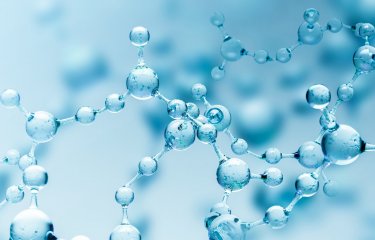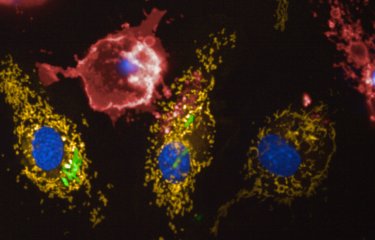Iron-sulfur (Fe-S) clusters are protein cofactors that are essential for life. It has generally been thought that the cellular machineries required to produce Fe-S clusters emerged in response to the increase in oxygen on Earth. But the results of a recent study indicate that the origins of dedicated Fe-S cluster synthesis machineries go back further, to the last universal common ancestor, well before the oxygenation of the atmosphere.
Iron-sulfur (Fe-S) clusters are protein cofactors that are essential for life. They are thought to have formed spontaneously before the emergence of life in an oxygen-free environment rich in iron and sulfur. They are now biosynthesized in organisms via three types of molecular machinery. It is widely believed that these machineries emerged in response to the progressive oxygenation of the Earth's atmosphere 2.4 billion years ago. But a new study proposes a very different scenario. Teams from the Institut Pasteur and the CEA-CNRS in Grenoble have identified and characterized two novel Fe-S cluster synthesis machineries which are present in several bacteria and archaea and already existed in the last universal common ancestor (LUCA).
Fe-S clusters, ancient assemblies of atoms
Fe-S clusters are assemblies of iron and sulfur atoms. They are found in a large number of proteins throughout the living world and are involved in countless cellular processes. On ancient Earth, Fe-S cluster synthesis may have emerged spontaneously because of the oxygen-free atmosphere rich in iron and sulfur. But around 2.4 billion years ago, the oxygen concentration increased dramatically. Active forms of oxygen emerged, destabilizing Fe-S clusters and leading to the oxidation of bioavailable iron, which became increasingly rare. These environmental upheavals created obstacles for the formation of Fe-S clusters and their use by cells. One widespread hypothesis is therefore that organisms adapted by developing protein machineries capable of catalyzing Fe-S cluster synthesis and protecting Fe-S clusters. Three Fe-S machineries had previously been identified in all living beings.
Examining the origins of Fe-S machineries using genomics and biochemistry
The teams led by Frédéric Barras and Simonetta Gribaldo (Institut Pasteur) and Sandrine Ollagnier (CEA-CNRS Grenoble) pooled their expertise to study the evolutionary history of Fe-S cluster biogenesis machineries. After analyzing more than 10,000 genomes, they discovered and characterized two new machineries, MIS and SMS, which are present in several prokaryotes and date back to the last universal common ancestor (LUCA). These ancient systems have remained close to their ancestral configuration in archaea but progressively evolved in bacteria, leading to the three other protein machineries known to date.
Fe-S clusters emerged before the oxygenation of the Earth's atmosphere
The oxygenation of the Earth's atmosphere occurred because of the photosynthetic activity of cyanobacteria, prokaryotes that emerged well after the LUCA. The presence of MIS and SMS in the LUCA indicates that Fe-S cluster synthesis has always required the assistance of cellular machinery, even when it occurred in favorable conditions. It therefore did not emerge as a consequence of the Earth's oxygenation. These results offer a new perspective on the diversity, evolution and biology of Fe-S clusters. The research also offers new prospects for understanding the very first metabolic systems linked with the origins of life.
Source
An early origin of Iron-Sulfur cluster biosynthesis machineries before Earth oxygenation, Nature Ecology & Evolution, September 15, 2022
Pierre Simon Garcia1,2, Francesca D’Angelo*1, Sandrine Ollagnier-de Choudens*3, Macha Dussouchaud1, Emmanuelle Bouveret1, Simonetta Gribaldo2 #, Frédéric Barras1#
1 Institut Pasteur, Department of Microbiology, Stress, Adaptation and Metabolism in Enterobacteria Unit, Université Paris Cité, UMR CNRS 6047, Paris, France
2 Institut Pasteur, Department of Microbiology, Evolutionary Biology of the Microbial Cell Unit, Université Paris Cité, UMR CNRS 6047, Paris, France
3 Univ. Grenoble Alpes, CNRS, CEA, Chemistry and Biology of Metals laboratory, F-38000 Grenoble, France





